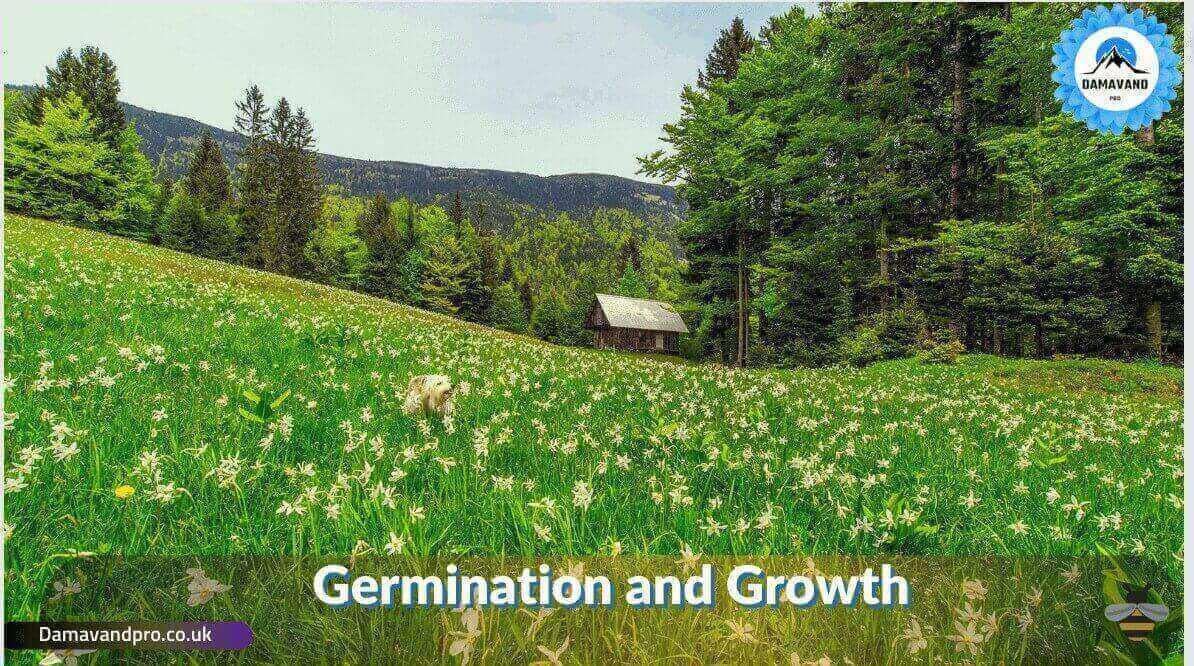+447709283333 | info@damavandpro.com

Germination and Growth
Wildflower germination and growth is a fascinating process that begins with a seed and culminates in a mature plant. Learning about wildflower life cycles can help you better understand the natural environment and can also teach you a lot about gardening and other forms of plant cultivation.
Wildflower germination begins when a seed is exposed to the right combination of moisture and temperature. The seed absorbs moisture, and the cells expand, causing the seed to crack open and a tiny stem to emerge. This stem is called a radicle and is the first part of the seedling.
As the radicle grows, it begins to form a root system and absorb essential nutrients from the surrounding soil. Once the wildflower seedling has established a root system, the next stage of growth is the formation of a shoot.
The shoot is the stem of the plant and contains the nodes that will eventually produce the flowers. The nodes are short sections of stem that contain the buds that will become the flowers. As the shoot continues to grow, the nodes will produce either male or female reproductive organs. As the wildflower continues to grow, it produces leaves and flowers.
The flowers contain the reproductive organs, allowing for pollination and seed formation. Pollination is when pollen from a male plant is transferred to a female plant, allowing them to reproduce. After pollination, the female plant will produce seeds, which will eventually be dispersed away from the parent plant.
Wildflower life cycles are incredibly complex and fascinating. By understanding the basics of germination and growth, you can gain a better appreciation for the natural environment and the life cycles of its plants. This knowledge can also be applied to gardening and other forms of plant cultivation.
Example of Germination and Growth
Concrete examples:
1. Germination of a wildflower begins with a seed absorbing moisture and the cells expanding, causing it to crack open and a tiny stem (the radicle) to emerge.
2. Once the root system has been established, the next stage of growth is a shoot, which contains the nodes that will become the flowers.
3. The flowers contain the reproductive organs, which facilitate pollination, allowing the wildflower to reproduce and form seeds.
4. Dispersal of the seeds away from the parent plant completes the wildflower life cycle.
5. By understanding wildflower germination and growth, you can gain a better appreciation for the natural environment and use this knowledge to cultivate plants in a garden.
Test your knowledge about Germination and Growth
What is the first part of the wildflower seedling?
A. Stem.
B. Radicle (Right)
C. Node.
D. Flower.
